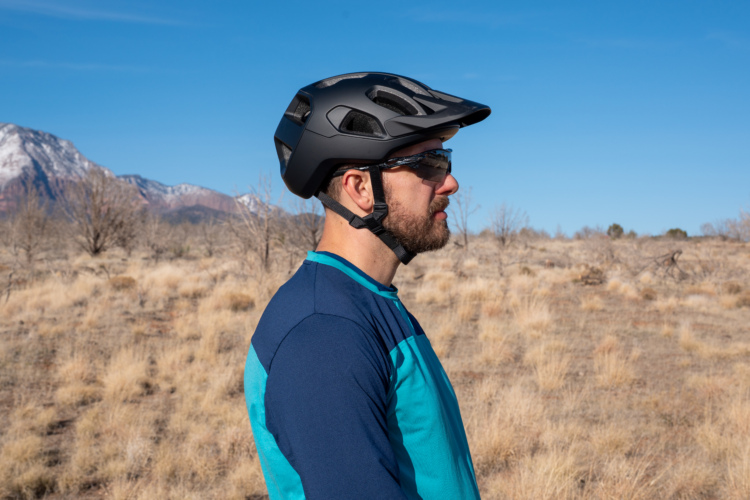
Ninja Mountain Bike Skills founder Richard La China had a problem.
The ramps his instructors were using to teach mountain bikers how to jump kept breaking. Fortunately, the injection-molded plastic ramps weren’t expensive — only about 100 bucks each — but it was a constant hassle to get replacement ramps out to instructors who criss-cross the country teaching jumping skills clinics. What’s worse, “when they broke, it was catastrophic,” La China said.
The team developed their own welded steel structure to reinforce the ramps, which helped, but one day, the ramp supply dried up completely. “Everyone was out of stock,” La China told me. “So then I found out that they went out of business.” Not only did he need the ramps for teaching clinics, many Ninja students saw the ramps being used in class and wanted to buy their own so they could practice at home.
A serial entrepreneur, La China had hoped to buy the ramp company’s remaining supply, or even better, the molds used to make the ramps, but came up empty. So in late 2019, he decided to build his own.



Building a better bike ramp
Ninja bike ramps are made from high-quality plywood that’s designed to fit together almost like a piece of Ikea furniture. “All of our ramps are portable. Even our biggest ramp has wheels, and it can be towed behind your bike.”
Not only did La China want a design that’s easy to transport and store, he also needed a product that’s easy to ship. The company’s ramps are available for purchase online with worldwide delivery options; only the largest ramp — the six-foot Lobo Launcher — requires freight delivery.
Before launching his own ramp, La China tested all the bike ramps from various companies that he could get his hands on, though he found that none of them were quite right. So, he set out to come up with his own design. Once he had a workable prototype, he found a manufacturer in Europe who agreed to make the ramps, and the first batch sold out instantly.
“I’m a little bit of a control freak, especially for things that my name’s on,” La China said. “And I wanted to make sure that if this is Ninja-branded, that it’s Ninja quality.”
With a clear demand for the product, and given his desire to have complete quality control, the next step was to mass produce the ramps himself. He hired an engineer from the Oregon Institute of Technology, who also happened to be an avid rider and backyard ramp builder, and set up a shop in Klamath Falls, Oregon. He purchased a 5×12-foot industrial CNC router to start, and now has four of them operating 16 hours a day, seven days a week, to keep up with demand.
La China received a US design patent for Ninja ramps this year, along with similar patents in China, Europe, the United Kingdom, and other countries.
“We have a bike stand called the Stoke, and we were selling hundreds and hundreds of those,” he said. “Then all of a sudden, the sales came to a screeching halt, and no one could figure out why. And then we look, and this company 100% blatantly copied our design and did it in injection-molded plastic and just blasted it all over every marketplace, Amazon, etc.” With a design patent in hand for the ramps, this time, the team is hoping to avoid copycats.

Ramps for every rider, but at a price
Ninja offers eight different ramps, ranging from $99 skateboard/RC-car jumps to the $2,899 Lobo Launcher, which most buyers tend to purchase with a Ninja Airbag Lander. Then there are ramps for heavy electric motorcycles like the Surron, capable of supporting up to 450lb. Though all of the ramps look simple, they aren’t cheap, especially compared to what one could build at home.
Early on, “the feedback was, ‘Wow, this is ridiculous. $500 for a ramp? I could make that out of dirt and a piece of plywood,'” La China said. “And my response would be like, ‘Cool. Do it. That’s what I did. Nothing wrong with that.'” He argues Ninja ramps are safer and more portable than homemade ramps, and their design makes them ideal for learning and progression.


White men can’t jump… but they want to learn
La China has built a business teaching mountain bike skills to eager students across the USA, with a constant stream of new riders wanting to learn the basics. And for those who have been riding for years, there’s always room for improvement, either through a class like the Ninja Jumping Mini-Clinic or practice at home.
“I’d say the bulk of the [ramp] customers are middle-aged men who want to learn how to jump,” La China said. Many buyers have attended a Ninja clinic and want to get more practice, while others already know how to jump and just want the convenience of doing so at home instead of driving to a bike park. And, of course, parents are buying ramps for their aspiring young shredders, too.
La China doesn’t see demand for the ramps slowing anytime soon. “There’s always people moving up to the mountain bike, in and out of the mountain bike or BMX world.” With progressively larger ramps available, and add-ons like the Ninja Skinny Balance Beam Log Ride, there’s a long runway for riders to improve their skills.
“You can buy one [ramp], use that the first season, get the bigger one next season. Or put two ramps side by side, or one after the other. I think it’s endless,” La China said. “I’m gonna keep making them as long as people keep buying them.”





















3 Comments
Dec 19, 2024
Clearly, there's a big market for these prefab jumps! Kudos to Ninja for creating such a solid product and meeting riders' needs!
Dec 19, 2024
Dec 20, 2024